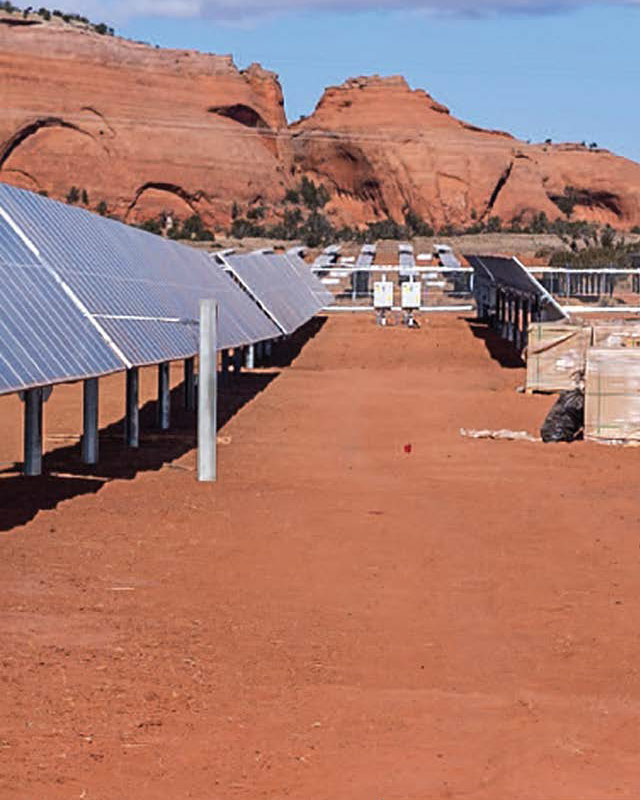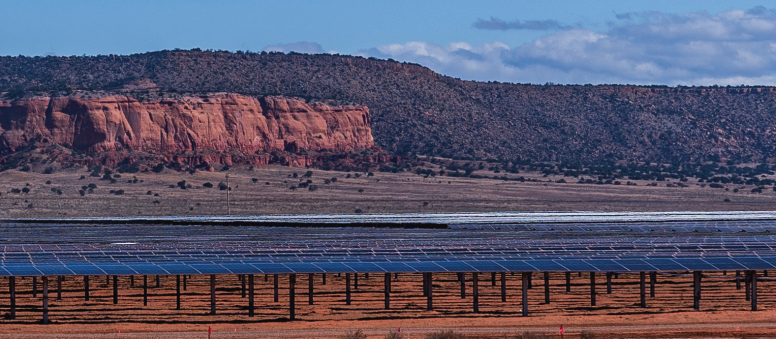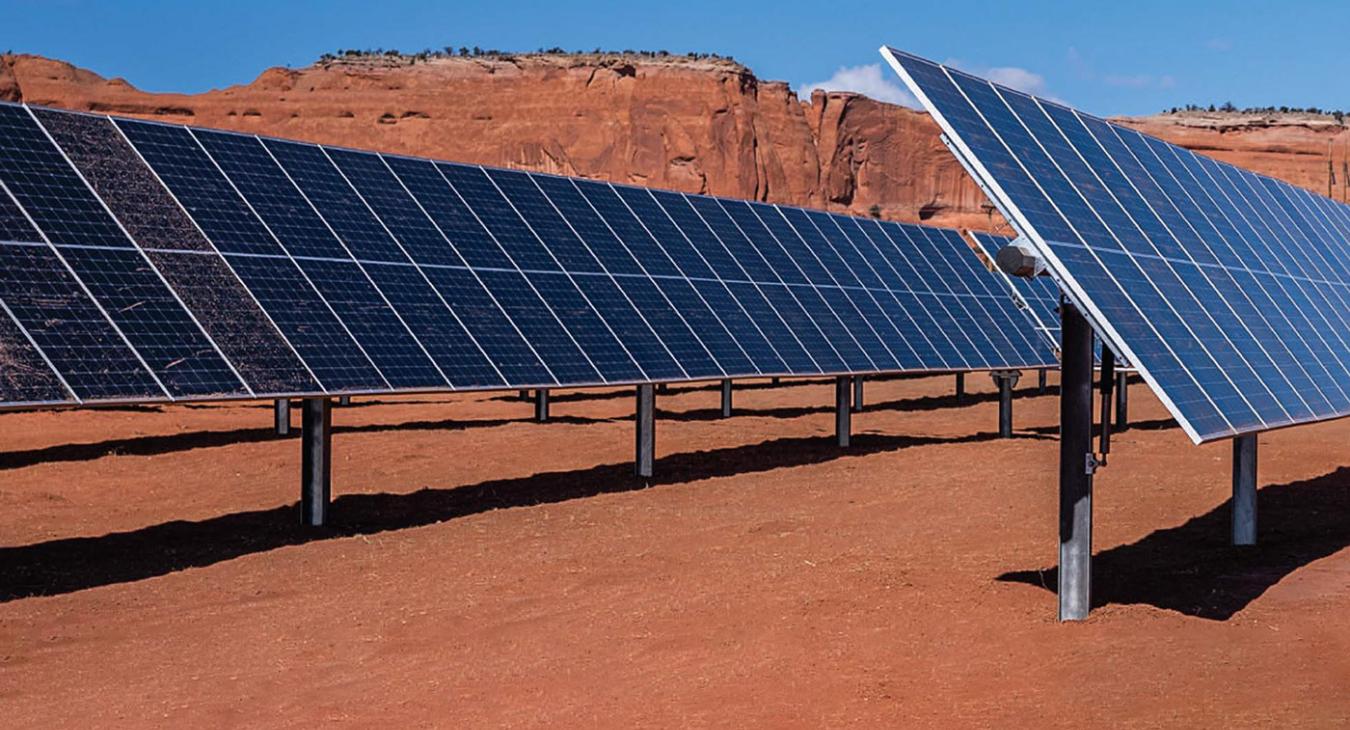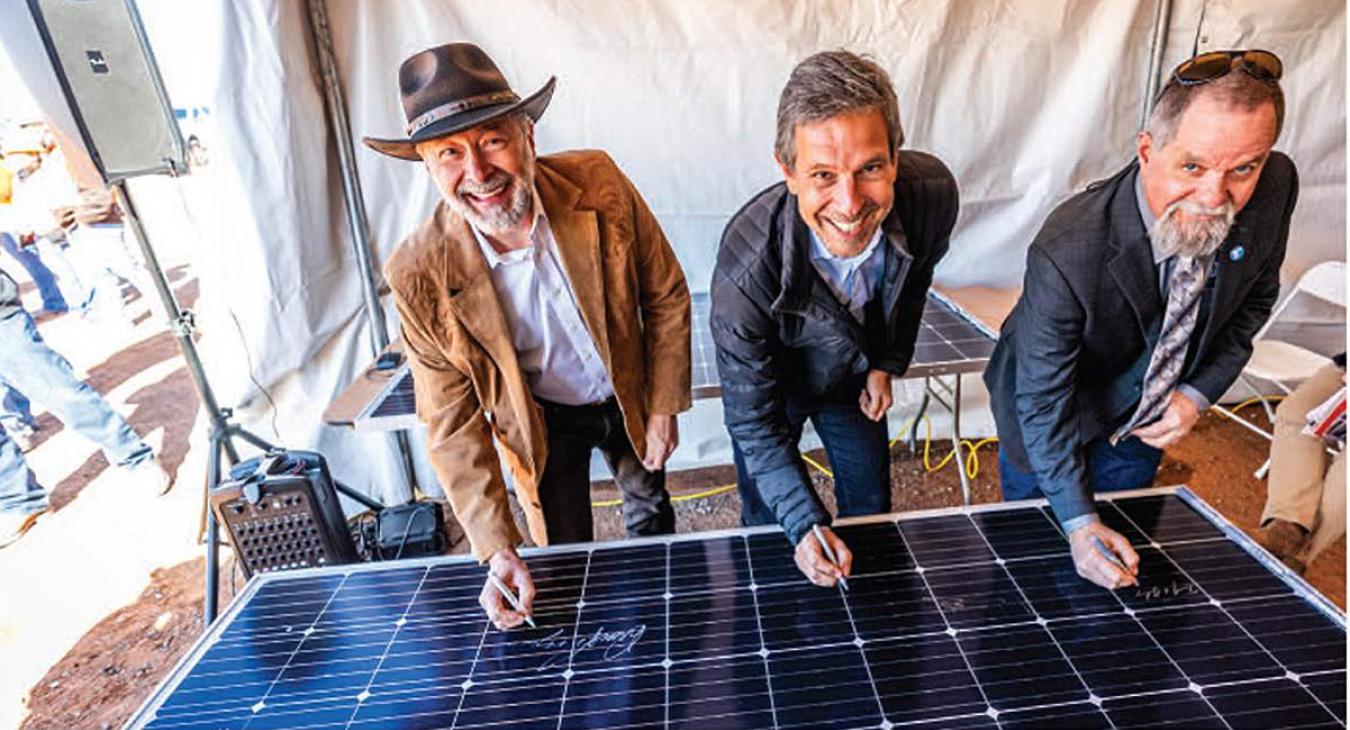Solar power generation benefits New Mexico residents while raising new generation questions
By Lonnie Tucker
In the sun-drenched landscapes of New Mexico, a solar revolution is underway. Electric generation and transmission cooperatives are transforming the state's energy landscape and powering a brighter, more sustainable future.
With an abundance of sunlight and a thriving ecosystem of solar innovators, New Mexico is focused on a renewable energy policy driving economic growth, job creation and environmental stewardship. However, solar generation is not a silver bullet, and electric distribution cooperatives are faced with a different set of challenges when this technology does not generate the required electricity.
According to data from the U.S. Energy Information Administration, New Mexico produced more than 17,000 megawatt hours of electricity in 2023. Renewable energy sources such as solar, wind, geothermal and biomass made up 43.3% of the state's total electricity, which ranked fifth in the United States.
Both Tri-State Generation and Transmission Association and Western Farmers Electric Cooperative, which provide electricity to the state's distribution co-ops, use renewable energy sources to generate a large portion of their electricity.

New Mexico's climate is characterized by an abundant amount of sunshine. The state ranks third in the nation, after Nevada and Ariwna, in solar energy potential.
Utility-scale solar photovoltaic facilities provided about 5% of New Mexico's total in-state net generation in 2022, and smallscale, customer-sited solar PV installations supplied about 1 %.
During the same period, wind energy contributed 84% of New Mexico's renewable generation and provided the largest share of the state's total in-state generation at 35%. In the beginning of 2023, New Mexico ranked ninth in the nation in wind capacity, with about 4,41 Jmegawatts installed.
Tri-State and Western Farmers recognize New Mexico's solar and wind energy generation capabilities. Tri-State is building the largest solar array in New Mexico: the Escalante Solar Project.
The 200-MW solar project-consisting of 500,000 solar panels-is expected to be brought online this month and deliver enough electricity to power 63,000 homes.
This project is one example of how Tri-State is reinvesting in our local communities to advance New Mexico's electric distribution cooperative's goals. It's also a step toward having 50% of the energy used by our members generated from renewable resources in 2025, five years ahead of the New Mexico's Energy Transition Act required statewide renewable energy standard of 50% by 2030.
Western Farmers owns and operates eight utility-scale solar farms and 13 community solar farms. The total combined capacity for owned and contracted assets is almost 2,400 MW in Oklahoma and New Mexico.
Western Farmers has a large renewable energy presence, with 956 MW of wind energy from 14 sites and 83 MW of solar from 22 sites, including utility-scale, community and purchase agreements.
New Mexico's electric distribution cooperatives support renewable energy generation and work with their respective generation and transmission cooperatives on the design and implementation of eight community solar projects generating more than 30 MW of clean renewable energy in their service territories. However, unlike fossil fuels, solar can only generate electricity when the sun is shining.
This is an engineering challenge because the power grid operates in real time. Power is generated and consumed simultaneously, with generation adjusting to keep the system in balance.
Renewable energy has its advantages, and New Mexico has shown it has both the sunshine and wind resources needed to generate renewable energy. But in the event these forms of generation fail to produce the required energy, electric distribution cooperatives must rely on either battery storage or dispatchable forms of energy to fill the void.
Engineering challenges create production solutions, and a number of solutions can help the inadequacies of renewable generation. For instance, the creation and use of battery storage systems-which store generated energy and discharge it when needed-to satisfy an electric distribution cooperative's energy load requirement.
Traditional residential loads have two peaks. The first is in the morning from 6 to 9 a.m. This is when people are waking up and using a considerable amount of energy to prepare for their day. The second peak occurs as people return to their homes and use a significant amount of energy between 5 and 8 p.m.
Your electric distribution cooperative and generation and transmission cooperative work together to make sure the required energy is available for cooperative members day and night.
Most solar panels achieve peak production between 10 a.m. and 2 p.m., when the sun is at its highest point in the sky. A primary challenge with solar generation is energy production declines from 3 to 6 p.m., and little energy is produced thereafter.
This scenario is every energy provider's dilemma. As production from solar power tapers off, demand continues to rise each night until 8 p.m., before people begin turning out the lights and going to bed. The home will continue to use energy through the night, just at a lower usage level.
Electric distribution cooperatives and the utility industry are now faced with a different energy demand. Electric vehicle owners are scheduling their cars to charge during off-peak hours between 11 p.m. and 6 a.m., when solar energy is not generating or contributing any electricity to the home or grid.
The cycle begins again as members wake up the next morning. Tri-State and Western Farmers work to provide their electric distribution cooperatives with a reliable source of energy 24 hours a day. When renewable energy generation is negatively affected by cloud cover, no wind, seasonal changes or variation in daylight hours throughout the year, the energy demand must be met instantaneously.
The generation and transmission cooperatives-owned by the electric distribution cooperatives are there to provide electricity from their generation portfolio.
Tri-State, Western Farmers and your electric distribution cooperatives have a responsibility to provide you with a safe, reliable, affordable and responsible supply of electricity in accordance with cooperative principles.
Together, we are taking renewable energy to a new level in New Mexico. Fifteen electric distribution cooperatives and two generation and transmission cooperatives work together to enhance the lives of their members through the generation and use of clean, renewable energy with a dedicated backup generation when needed.
That is the cooperative difference.



